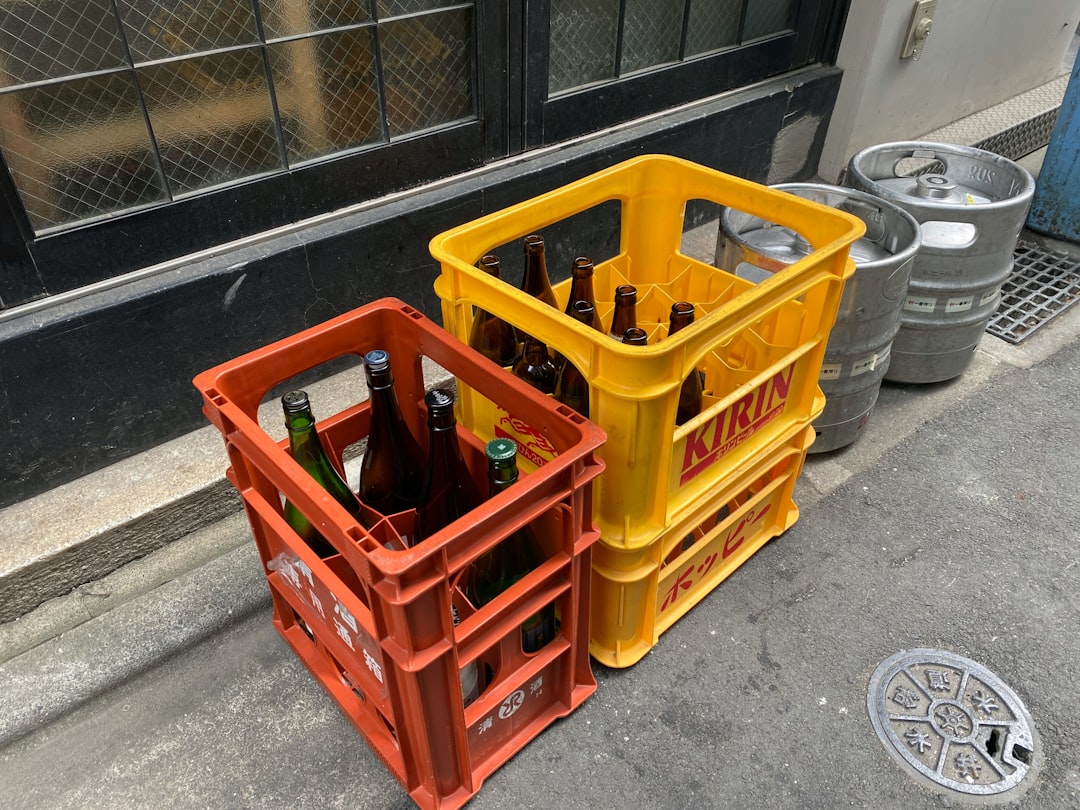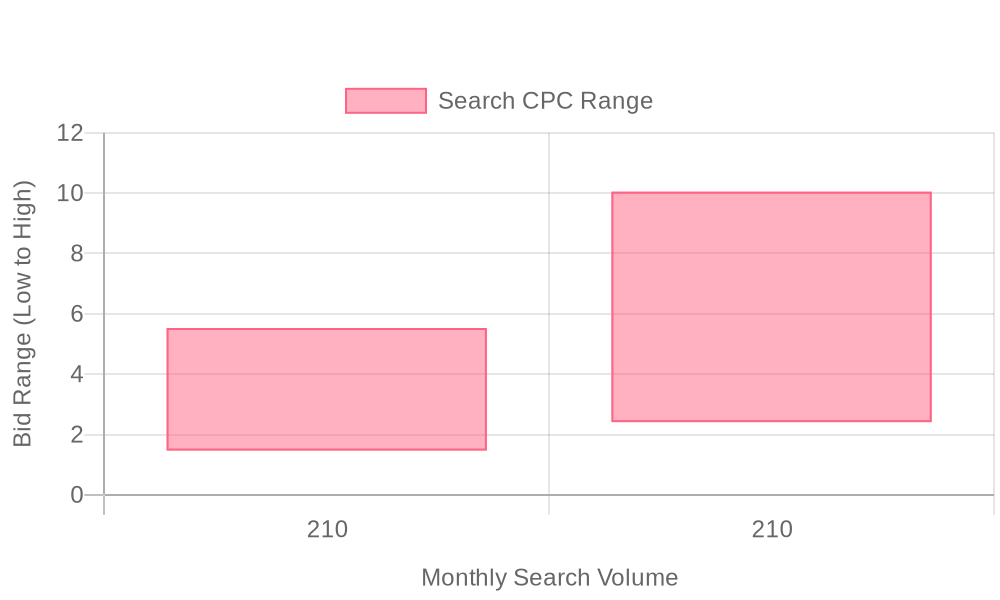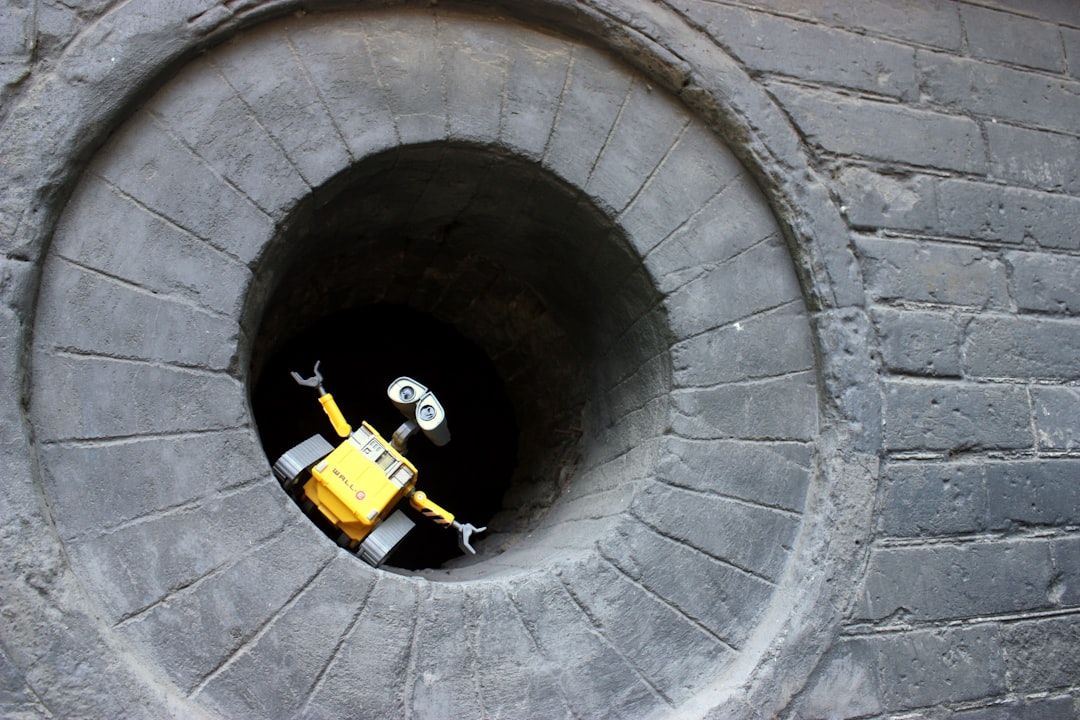
Supercharge your lead generation with a FREE Google Ads audit - no strings attached! See how you can generate more and higher quality leads
Get My Free Google Ads AuditFree consultation

No commitment
Supercharge your lead generation with a FREE LinkedIn Ads audit - no strings attached! See how you can generate more and higher quality leads
Get My Free Google Ads AuditFree consultation

No commitment
Supercharge your lead generation with a FREE Meta Ads audit - no strings attached! See how you can generate more and higher quality leads
Get My Free Google Ads AuditGet My Free LinkedIn Ads AuditGet My Free Meta Ads AuditFree consultation

No commitment
Supercharge your lead generation with a FREE Google Ads audit - no strings attached! See how you can generate more and higher quality leads
Get My Free Google Ads AuditFree consultation

No commitment
In today's competitive landscape for sewer equipment suppliers, capturing qualified leads is a key driver of business growth. While traditional methods like trade shows and direct mail maintain their value, digital channels such as Google Ads have become indispensable. Industry professionals often face the challenge of reaching high-value prospects that go untracked, which can lead to missed opportunities. Google Ads allows suppliers to target decision-makers like procurement heads and facilities managers precisely when they’re searching for specific solutions, addressing this common frustration. For sewer equipment suppliers, leveraging Google Ads not only helps in intercepting potential buyers at their moment of need but also bridges online and offline marketing efforts. This creates a seamless journey from initial interest to a closed deal, thereby maximizing ROI.
B2B marketers in the sewer equipment supply industry face unique challenges in attracting high-intent buyers and converting interest into sales-ready leads. Using Google Ads, you can reach decision-makers at the exact moment they search for specialized equipment, driving efficient lead generation and measurable growth. For a comprehensive look at Google Ads strategies tailored to plumbing and home service contractors, explore this guide on Google Ads for plumbing, HVAC, and home service contractors, which shares insights applicable to sewer equipment suppliers as well.
This step-by-step guide details how to structure and execute Google Ads campaigns tailored for sewer equipment suppliers. Each phase—from audience targeting to conversion tracking—aligns with best practices for multi-channel marketing, ensuring your strategy maximizes ROI and captures both immediate and long-term demand. The framework below emphasizes practical tactics that unify your marketing data, streamline lead management, and provide actionable insights for continuous improvement.

Sewer equipment suppliers operate in a specialized B2B environment defined by complex procurement cycles, urgent service requests, and regionally fragmented markets. Google Ads provides a direct channel to procurement professionals and facility managers actively searching for solutions, capturing high-intent leads at the precise moment of need. For a detailed breakdown of how Google Ads can generate leads and support growth for contractors in similar industries, review this comprehensive guide for plumbing, HVAC, and home service contractors.
Ready to accelerate your demand generation? Get started for free with Sona.

Precision targeting is essential for sewer equipment suppliers navigating highly specialized markets. Vertical keyword targeting allows campaigns to surface for niche products or services, capturing demand overlooked by broader keyword strategies. This approach ensures visibility in front of decision-makers searching for trenchless rehab tools, CCTV inspection units, or proprietary nozzles, without wasting spend on low-intent search terms. Aligning ad copy and landing experiences with these granular keywords increases relevance and quality scores, reducing cost per acquisition. For additional insights on how Google Ads can generate highly-qualified leads in this sector, check out this comprehensive guide for plumbing and home service contractors.
A competitor gap analysis uncovers untapped opportunities by revealing which keywords and placements competitors dominate—or neglect. Auction insights tools, when paired with enriched intent data, help teams identify shifts in search trends or gaps where outdated competitor data limits response. Marketers who combine this intelligence with real-time visitor identification can spot new entrants, shifting budgets quickly to exploit weaknesses in the competitive landscape. Dynamic intent signals ensure that campaigns remain agile, redirecting spend to the highest-value segments as new market data emerges.
Industry forums and equipment directories offer prime placement for ads, especially where organic rankings may lag. Sponsored listings or display placements on these platforms put your brand in front of an audience actively researching sewer solutions and procurement options. This channel is ideal for positioning special offers, new product launches, or event participation, as these audiences exhibit strong purchase intent but are less saturated than broad search results. If you need a step-by-step playbook on amplifying outreach, explore precision prospecting using intent signals.
Retargeting content assets—such as technical whitepapers, product comparison guides, and how-to videos—keeps your brand top-of-mind throughout the buyer's journey. Advanced retargeting capabilities enable you to dynamically serve tailored content based on visitor engagement and funnel stage. For example, leads who download a specification sheet may be retargeted with webinar invitations, while those who watched a demo video see a limited-time consultation offer. CRM and ad platform integration allows seamless audience updates, ensuring only the most relevant prospects receive your messaging, increasing conversion rates and pipeline velocity. For more on these tactics, explore retargeting strategies.

Accurate audience segmentation is foundational for high-performing Google Ads campaigns in the sewer equipment supply sector. A tailored approach leverages both firmographic and behavioral data, ensuring messaging and offers reach the right buyers at the right stage of their purchasing journey. To dive deeper into B2B segmentation, explore this guide to account-based marketing.
Audience segmentation, when executed with real-time data and automated workflows, empowers sewer equipment suppliers to run more effective, scalable, and measurable campaigns. These best practices ensure your spend is always focused on the highest-intent, best-fit buyers in the market. To see how you can apply these strategies, get started for free with Sona.

| Industry | Keyword | Monthly Search Volume | Competition Level | Low Bid | High Bid |
| Sewer Equipment Suppliers | sewer supplies | 210 | MEDIUM | 1.47 | 5.53 |
| Sewer Equipment Suppliers | sewer supplies near me | 210 | MEDIUM | 2.41 | 10.05 |
Effective keyword strategy is foundational for Google Ads for sewer equipment suppliers. Targeting high-intent terms such as "sewer jetter for sale near me" or specific model numbers ensures exposure to decision-makers who are ready to engage or purchase. These transactional queries drive qualified leads and reduce the noise from research-focused visitors, directly improving lead quality for B2B sales teams. For a deeper dive into effective strategies tailored specifically for plumbers and home service contractors, review this comprehensive guide on Google Ads for plumbing and HVAC.
A unified data approach enables marketers to go beyond keyword targeting and segment audiences based on actual in-market behavior. When enriched lead and account data flows directly into campaign targeting, teams can automatically prioritize high-converting accounts and shift budgets toward the most valuable prospects using Sona Destinations. Unlock more agile, ROI-driven Google Ads strategies and streamline your sewer equipment advertising efforts—get started for free with Sona.

Modern B2B marketers expect clarity, accuracy, and measurable outcomes from their paid media investments. Sewer equipment suppliers face a unique challenge: ensuring each marketing dollar targets high-intent prospects while bridging fragmented data and maximizing ROI. Advanced PPC for sewer equipment allows suppliers to shift from generic outreach to precise, context-driven advertising that aligns with sales pipelines. For a comprehensive overview of Google Ads strategies tailored to this industry, review this guide for plumbing and home service contractors.
A unified, data-driven approach is crucial for online marketing for sewer suppliers, as it reduces waste and accelerates lead generation. By leveraging enriched account insights and real-time conversion data, teams can continuously refine targeting, messaging, and attribution, resulting in more closed deals and fewer missed opportunities. The following framework delivers a practical, stepwise method to elevate Google Ads strategies for suppliers.
With visitor identification and enriched account data, marketing teams can move beyond broad terms and build highly segmented keyword lists. This approach addresses both volume and intent, ensuring that campaigns for Google Ads for Sewer Equipment Suppliers attract the right prospects at the right time.
Leveraging real-time intent signals, advertisers can dynamically adjust messaging as prospects move through the funnel. This means ads for sewer equipment advertising are always relevant to the user's stage, increasing both engagement and conversion efficiency.
When landing pages and ad campaigns are unified with enriched audience and intent data, suppliers can measure true engagement and continuously test messaging for higher lead generation for plumbing and sewer equipment.
By syncing enriched leads and activity directly into advertising and CRM platforms, sewer equipment suppliers gain a comprehensive view of their marketing impact. This empowers teams to make faster, smarter adjustments, maximizing every opportunity for growth in Google Ads for plumbing suppliers campaigns. Get started for free with Sona.

Targeted expansion strategies are essential for sewer equipment suppliers aiming to capture a larger share of a highly specialized market. By integrating educational content, localized campaigns, and data-driven partnerships, suppliers position themselves to attract qualified buyers and stand out against less sophisticated competitors. For more insights on growth, explore our marketing, attribution, and demand generation blog.
A disciplined approach to Google Ads strategies for suppliers—supported by unified data and real-time insights—enables sewer equipment suppliers to maximize PPC, reduce wasted spend, and generate consistent, high-quality leads. If you're ready to streamline these strategies and scale your results, Get started for free with Sona.
In conclusion, leveraging Google Ads for your sewer equipment supply business can transform your marketing efforts and significantly boost your lead generation capabilities. By understanding the specific needs of your industry and implementing targeted strategies, you can maximize your visibility and reach the right audience effectively.
We explored the challenges facing sewer equipment suppliers, such as niche market targeting and competitive positioning. Key solutions include utilizing precise keyword targeting, optimizing ad copy for your audience, and continuously analyzing performance data to refine your campaigns. These steps are essential for standing out in a crowded digital marketplace.
Imagine the potential growth and customer engagement you could achieve by effectively tapping into the power of Google Ads. With the right approach, your business can enhance its online presence, drive more qualified leads, and ultimately, increase sales in a sustainable way. The tools and insights discussed can be your stepping stones to realizing this transformation.
To truly experience how data-driven strategies can elevate your advertising efforts, start for free and explore the capabilities that can empower your business today.
Sewer equipment suppliers can use Google Ads to target decision-makers like procurement heads and facilities managers precisely when they're searching for specific solutions, intercepting potential buyers at their moment of need and bridging online and offline marketing efforts.
While the article does not specify an exact budget, it emphasizes the importance of precision targeting and maximizing ROI, suggesting that budgets should be aligned with high-value contracts and demand spikes.
Best practices include using audience targeting, leveraging geo-targeting features, and incorporating real-time intent data to ensure campaigns focus on high-intent leads, improving outreach quality and message relevance.
Success can be measured through closed-loop measurement capabilities, integrating online and offline conversion tracking to gain a full view of ROI, and ensuring that every interaction is tracked to measure full-funnel ROI.
Focus on high-intent terms such as 'sewer jetter for sale near me' or specific model numbers, and incorporate negative keywords to filter out non-transactional searches, improving lead quality and conversion rates.
Join results-focused teams combining Sona Platform automation with advanced Google Ads strategies to scale lead generation

Connect your existing CRM

Free Account Enrichment

No setup fees
No commitment required

Free consultation

Get a custom Google Ads roadmap for your business
Join results-focused teams combining Sona Platform automation with advanced Meta Ads strategies to scale lead generation

Connect your existing CRM

Free Account Enrichment

No setup fees
No commitment required

Free consultation

Get a custom Google Ads roadmap for your business
Join results-focused teams combining Sona Platform automation with advanced LinkedIn Ads strategies to scale lead generation

Connect your existing CRM

Free Account Enrichment

No setup fees
No commitment required

Free consultation

Get a custom Google Ads roadmap for your business
Join results-focused teams using Sona Platform automation to activate unified sales and marketing data, maximize ROI on marketing investments, and drive measurable growth

Connect your existing CRM

Free Account Enrichment

No setup fees
No commitment required

Free consultation

Get a custom Google Ads roadmap for your business
Over 500+ auto detailing businesses trust our platform to grow their revenue
Join results-focused teams using Sona Platform automation to activate unified sales and marketing data, maximize ROI on marketing investments, and drive measurable growth

Connect your existing CRM

Free Account Enrichment

No setup fees
No commitment required

Free consultation

Get a custom Google Ads roadmap for your business
Over 500+ auto detailing businesses trust our platform to grow their revenue
Join results-focused teams using Sona Platform automation to activate unified sales and marketing data, maximize ROI on marketing investments, and drive measurable growth

Connect your existing CRM

Free Account Enrichment

No setup fees
No commitment required

Free consultation

Get a custom Google Ads roadmap for your business
Over 500+ auto detailing businesses trust our platform to grow their revenue
Our team of experts can implement your Google Ads campaigns, then show you how Sona helps you manage exceptional campaign performance and sales.
Schedule your FREE 15-minute strategy sessionOur team of experts can implement your Meta Ads campaigns, then show you how Sona helps you manage exceptional campaign performance and sales.
Schedule your FREE 15-minute strategy sessionOur team of experts can implement your LinkedIn Ads campaigns, then show you how Sona helps you manage exceptional campaign performance and sales.
Schedule your FREE 15-minute strategy sessionOur team of experts can help improve your demand generation strategy, and can show you how advanced attribution and data activation can help you realize more opportunities and improve sales performance.
Schedule your FREE 30-minute strategy sessionOur team of experts can help improve your demand generation strategy, and can show you how advanced attribution and data activation can help you realize more opportunities and improve sales performance.
Schedule your FREE 30-minute strategy sessionOur team of experts can help improve your demand generation strategy, and can show you how advanced attribution and data activation can help you realize more opportunities and improve sales performance.
Schedule your FREE 30-minute strategy sessionOur team of experts can help improve your demand generation strategy, and can show you how advanced attribution and data activation can help you realize more opportunities and improve sales performance.
Schedule your FREE 30-minute strategy session





Launch campaigns that generate qualified leads in 30 days or less.
